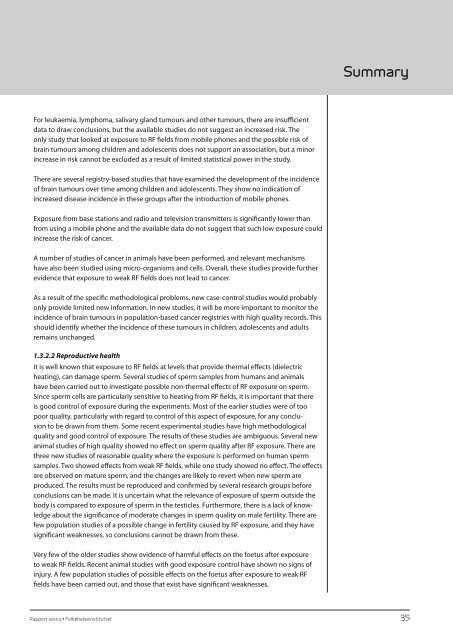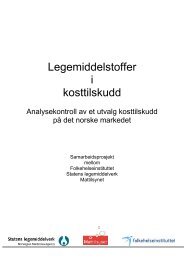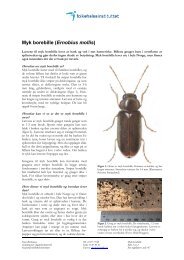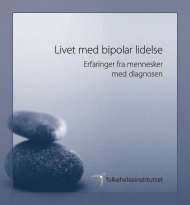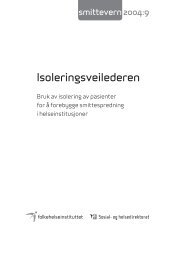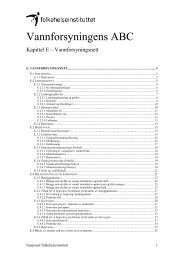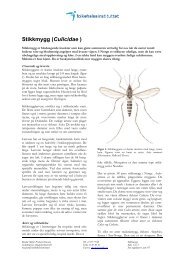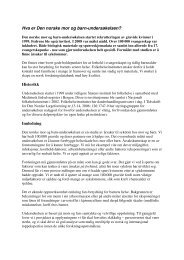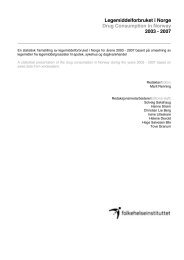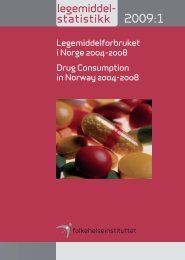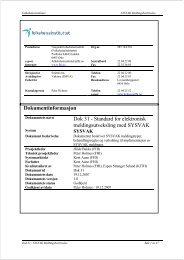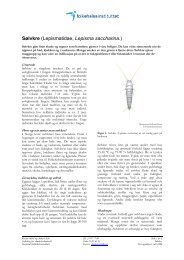rapport 2012:3 - Nasjonalt folkehelseinstitutt
rapport 2012:3 - Nasjonalt folkehelseinstitutt
rapport 2012:3 - Nasjonalt folkehelseinstitutt
Create successful ePaper yourself
Turn your PDF publications into a flip-book with our unique Google optimized e-Paper software.
For leukaemia, lymphoma, salivary gland tumours and other tumours, there are insufficient<br />
data to draw conclusions, but the available studies do not suggest an increased risk. The<br />
only study that looked at exposure to RF fields from mobile phones and the possible risk of<br />
brain tumours among children and adolescents does not support an association, but a minor<br />
increase in risk cannot be excluded as a result of limited statistical power in the study.<br />
There are several registry-based studies that have examined the development of the incidence<br />
of brain tumours over time among children and adolescents. They show no indication of<br />
increased disease incidence in these groups after the introduction of mobile phones.<br />
Exposure from base stations and radio and television transmitters is significantly lower than<br />
from using a mobile phone and the available data do not suggest that such low exposure could<br />
increase the risk of cancer.<br />
A number of studies of cancer in animals have been performed, and relevant mechanisms<br />
have also been studied using micro-organisms and cells. Overall, these studies provide further<br />
evidence that exposure to weak RF fields does not lead to cancer.<br />
As a result of the specific methodological problems, new case-control studies would probably<br />
only provide limited new information. In new studies, it will be more important to monitor the<br />
incidence of brain tumours in population-based cancer registries with high quality records. This<br />
should identify whether the incidence of these tumours in children, adolescents and adults<br />
remains unchanged.<br />
1.3.2.2 Reproductive health<br />
It is well known that exposure to RF fields at levels that provide thermal effects (dielectric<br />
heating), can damage sperm. Several studies of sperm samples from humans and animals<br />
have been carried out to investigate possible non-thermal effects of RF exposure on sperm.<br />
Since sperm cells are particularly sensitive to heating from RF fields, it is important that there<br />
is good control of exposure during the experiments. Most of the earlier studies were of too<br />
poor quality, particularly with regard to control of this aspect of exposure, for any conclusion<br />
to be drawn from them. Some recent experimental studies have high methodological<br />
quality and good control of exposure. The results of these studies are ambiguous. Several new<br />
animal studies of high quality showed no effect on sperm quality after RF exposure. There are<br />
three new studies of reasonable quality where the exposure is performed on human sperm<br />
samples. Two showed effects from weak RF fields, while one study showed no effect. The effects<br />
are observed on mature sperm, and the changes are likely to revert when new sperm are<br />
produced. The results must be reproduced and confirmed by several research groups before<br />
conclusions can be made. It is uncertain what the relevance of exposure of sperm outside the<br />
body is compared to exposure of sperm in the testicles. Furthermore, there is a lack of knowledge<br />
about the significance of moderate changes in sperm quality on male fertility. There are<br />
few population studies of a possible change in fertility caused by RF exposure, and they have<br />
significant weaknesses, so conclusions cannot be drawn from these.<br />
Very few of the older studies show evidence of harmful effects on the foetus after exposure<br />
to weak RF fields. Recent animal studies with good exposure control have shown no signs of<br />
injury. A few population studies of possible effects on the foetus after exposure to weak RF<br />
fields have been carried out, and those that exist have significant weaknesses.<br />
Summary<br />
Rapport <strong>2012</strong>:3 • Folkehelseinstituttet 35


